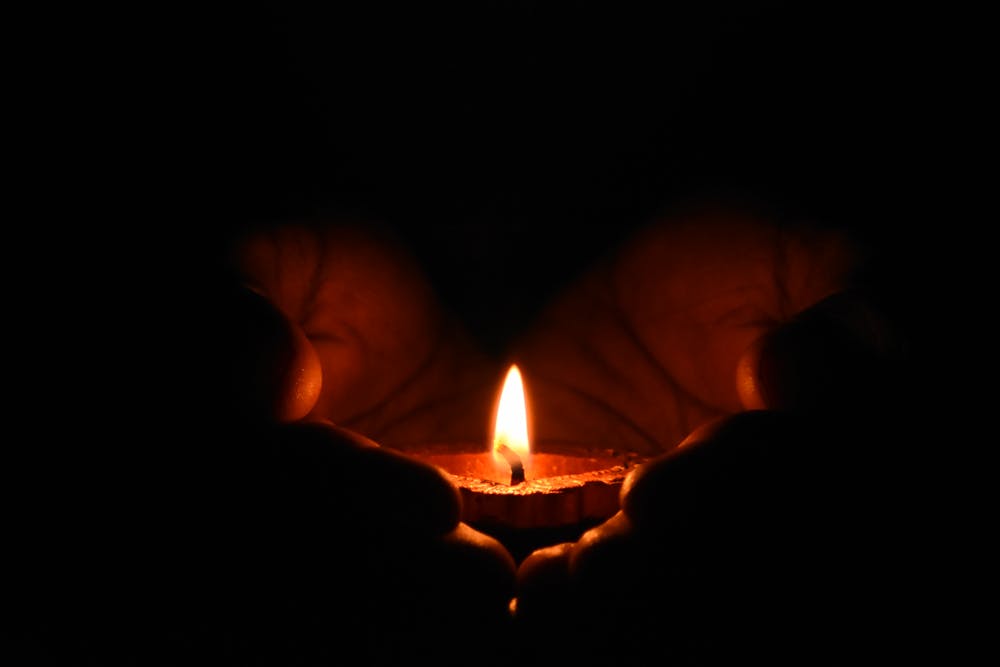
The Satipatthana Sutta is all about insight meditation, although it is quite possible to overlook that. It is translated as ‘the four foundations of mindfulness’. They are Kaya (body), Vedana (feeling), Citta (mental states) and Dhamma (themes to reflect with).
Kayanupassana means investigating the body through mindfulness. It is not about focussing on the breath to get concentrated or using mindfulness as a technique fix your problems – but establishing clarity and calm as a basis for investigation. So you pay attention to thoughts and sensations as they arise – so you can investigate them.
What is investigation? It is really non-interference. In the context of the body, a sensation is like this. Like what? That’s what we investigate – but without believing in a label that says it is like this or that – because it doesn’t conform to anything we can conceive. We stop trying to make it into a conception and just notice the experience of how it is and rest with that.
When you throw in a theme like ‘where am I’ – remember that in realisation, concepts don’t apply. So if you are finding an answer – it’s not that. So when an answer comes up say ‘Are you sure?’ And you will see it is a story you’ve made up – a conception – and you can see it’s not reality. So you let go – this is where relinquishment lies. You will find nothing attractive in the conceiving mind – and you won’t trust it. So keep looking until you realise with a shock that you are not looking any more – you’ve given up. But not given up – you are still sitting, the mind is still and it’s not complicating anything with grasping. That’s relinquishment.
So you keep looking – but now you are not trying to see. Just accepting what is. ‘I wonder if ‘me’ is in my little toe?’ just arises and ceases. Are you sure? Ah, you know it’s just the restless mind. It’s just this desperate clinging to a self somewhere – anywhere will do.
Like someone holding onto a precipice. Who doesn’t want to fall? But falling is inevitable – holding on is only resistance to reality. What is the reality you’re resistant to? When you have enough confidence in the Dhamma you’ll let go.
In writing it down it sounds like it’s reasoned out – but it’s not rational thinking. There is no one controlling this – it’s out of control. Insight is a truth revealed when we let go of the rational mind.
You should open and accept everything the mind can come up with – don’t hide from any of it or it will just grow and grow – open up to it and let it go without a second thought. And what comes back again and again tells us what we need to investigate. It comes back like a sick feeling in the stomach. You don’t know what it is but you stay with it unconditionally – welcoming it in. Sooner or later there will be a ‘that’s what it is! You’ll find a self there needing to come out. Welcoming it – not judging it – knowing where it comes from – knowing it as you would a good friend rather than an enemy – it will shift. And the feeling is gone. And you know it can’t come back.
That’s insight meditation. Once delusion shifts it shifts forever. It’s not a technique to get a result – if it was, the result would be dependent on conditions and be impermanent. This doesn’t arise out of conditions. It’s not you trying to get or get rid of something – you are not trying to become anything. Just watching. It’s the Dhamma that reveals itself to you – and you realise it was always there. You were pushing it away, chasing after conditions, trying to get this and away from that.
And it is Autumn – most of the leaves have fallen. Grey cold November. Whatever we think it is, in reality, it’s just like this.
Martin Evans 25 Nov 2020